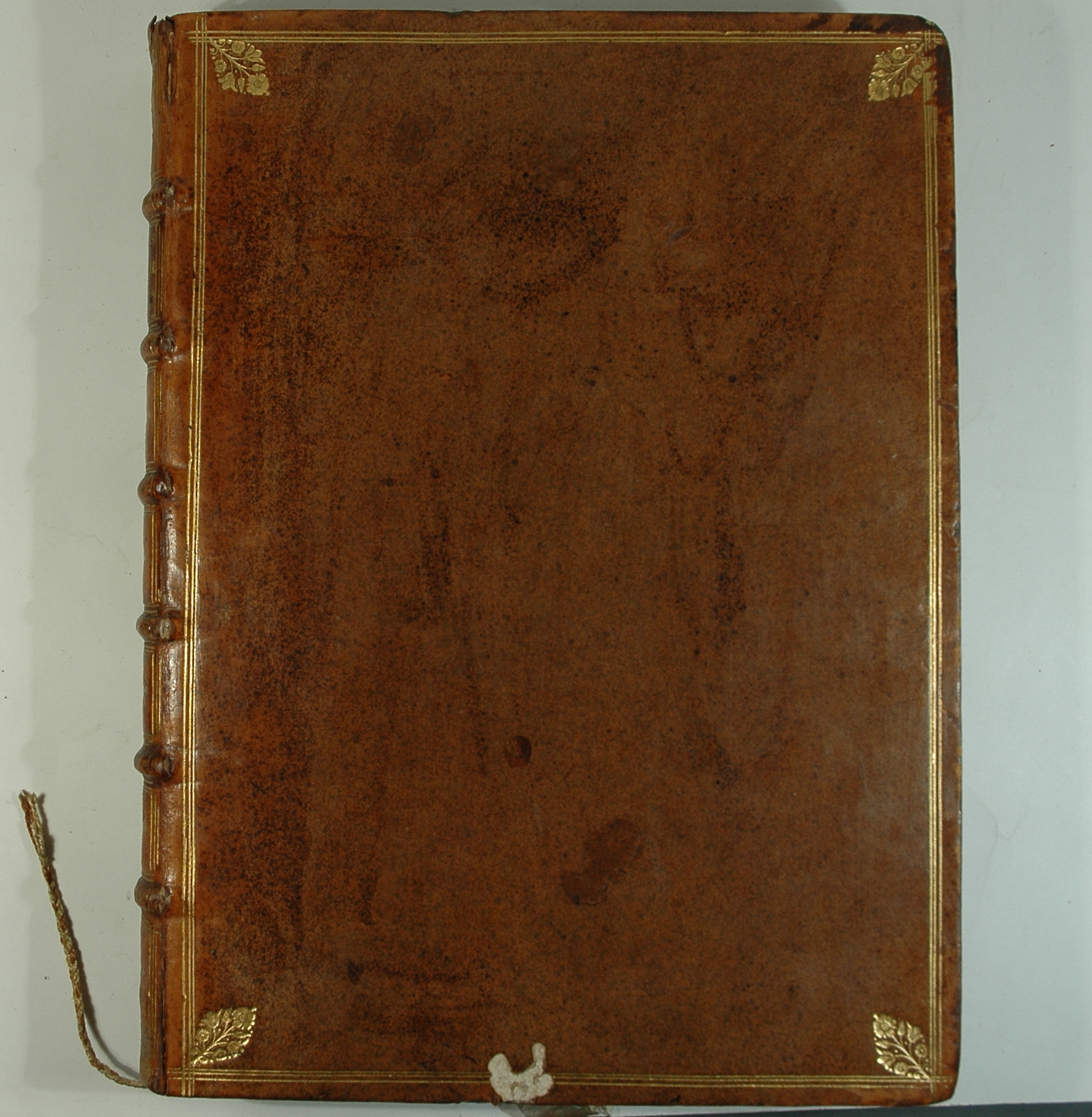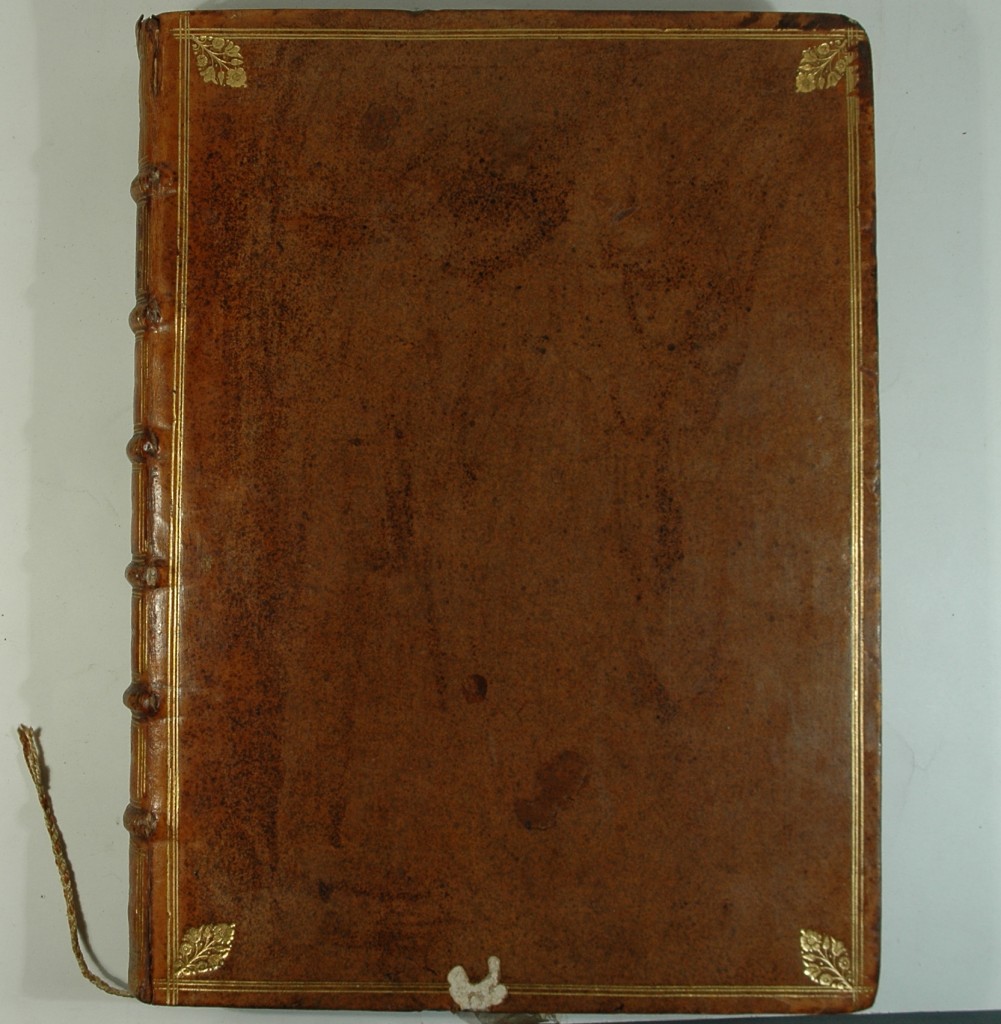VERGILIUS MARO, Publius
Les Oeuvres de Virgille. Translatées de Latin en Françoys
Paris, Nicolas Couteau pour Galliot du Pre, 1529£14,500.00
FIRST EDITION thus, ff. [ii], 232, I4 bound before I3. Lettre Bâtarde in double columns, Latin text in side notes, woodcut white on black and grotesque initials, title-page printed in red and black with large grotesque initial L in Vérard style, Gailot du Pré’s woodcut architectural title border in four parts, Gailot du Pré’s name and shield with horse in lower block (Renouard 263 lower portion), two large half page woodcut illustrations with a further 30 woodcut illustrations in text in various sizes, ‘Maurus de Gounel, Genus?’ in contemporary hand on title, autograph ‘Constantine’ in slightly later hand beneath, C19 armorial bookplate of the Earl of Macclesfield on pastedown, Shirburn Castle blindstamp to head of first two ll. Title fractionally trimmed in lower and upper margins, title and verso of last slightly dusty, light waterstains to lower margins, heavier on last few leaves, a few ink stains and the occasional thumb mark. A very good copy in English early eighteenth-century speckled calf, covers bordered with triple gilt rule, large gilt fleurons to corners, spine gilt in compartments with central fleurons, raised bands, gilt tan morocco title label, all edges speckled red.
Rare first collected edition of the works of Vergil in French, in the verse translation of Guillaume Michel de Tours for the Eclogues and Georgics and Octovien de Saint-Gelais for the Aeneid. The individual titles had been published in separate editions, all three of which are exceptionally rare; ‘Les Eneydes’ by Octovien de Saint-Gelais in 1509, ‘Les Bucoliques’ in 1516 and ‘Les Georgicques’ 1519 both by Guillaume Michel. This collection of the works was republished in 1532 and 1540. Both the translators were poets of some note, both Rhetoriqueurs, the name generally given to the group of poets active from approximately 1450 to 1530, between Villon and Clement Marot (including Chastellain, Meschonot, Molinet, Gringore, Crétin, Jean Lemaire de Belges, Jean Marot, and Jean Bouchet, who was still writing in 1550). St.-Gelais and Michel shared an intense preoccupation with rhetoric; it was as ‘l’art de seconde rhétorique’ that they classified poetry. Both were prolific and extremely influential translators of classical texts. Octovien de Saint-Gelais had considerable, knowledge of the literature of antiquity, and an eagerness to display it, sometimes leading to an excessive use of Latinisms in pursuit of a high style. His work in general concentrates on purely formal devices, such as elaborate rhyme schemes (rimes léonines, couronnées, enchaînées, équivoquées), alliteration, puns, rebus, and other types of puzzles. All this is sometimes (inevitably) at the expense of clarity. The Rhetoriqueurs influence on Renaissance poetry, with all its formal experimentation, was considerable. Rabelais too, with his love of puns and lists, can be seen as a direct heir. There had been an earlier anonymous translation of The Aeneid published before Saint Gelais’ but it was really a reworking of the text rather than a translation. “Influenced by the philological impulse of the earlier Humanists, sixteenth-century translators are almost universally concerned to demonstrate the fidelity and accuracy of their versions. The prose ‘remaniement’ of Vergil, close to a romance, which appeared anonymously in 1483 was challenged in 1509 by the posthumous publication of Octavien de Saint-Gelais’ verse translation composed with the intention ‘to translate this book from its lofty distinguished Latin word-for-word and as closely as possible’.” The Cambridge History of Literary Criticism. The works of Vergil had been published numerous times in France but no edition was more influential on French Renaissance literature than this poetical translation that brought Vergil’s work to a much wider audience. It was unequalled until Clement Marot’s version was published in 1577.
Most, if not all, of the woodcuts used in this volume are incunable blocks from Vérard’s general stock, giving the work immense visual charm. The large and fine woodcut depicting an author at his desk that accompanies the prologue to the Aeneid had also been used by Couteau in ‘La légende des Flamens’ in 1522. The present work is very rare, Renouard cites thirteen copies in public libraries worldwide (mostly in provincial France) but we have been able to locate far fewer and no copies at auction in the last thirty years. An important, rare and extremely influential work from the exceptional library of the Earls of Macclesfield.
BM STC Fr. C16 p. 443. Moreau III, 1947. Renouard 'Inventaire Chronologique des éditions Parisiennes' 1529 no. 1947. Brunet V 1300. Brun p. 312. 'Première édition complètes des oeuvres de Virgile en francais…. Une première suite, archaique, comprends des figures formées de plusieurs bois juxtaposés, avec les noms des personages á la partie supérieur; dans une seconde suite, les vignettes, avec le noms sur des banderoles, se rapportent au texte.' Graesse VII 357. Not in Mortimer Harvard, or Fairfax Murray.In stock






